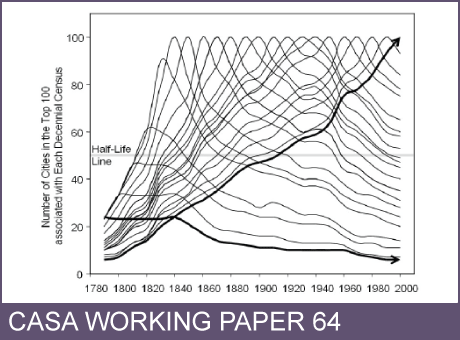CASA Working Paper 64

1 July 2003
The Emergence of Cities: Complexity and Urban Dynamics
This paper presents an approach to urban dynamics that generalizes the traditional rank-size model first popularized by Zipf (1949). It argues that we need to define the rate at which new cities emerge and old cities disappear within the apparent macro stability posed by Zipf's Law.
We illustrate this with a reworking and extension of Zipf's analysis of the US urban system, taking his analysis from 1790 to 1930 forward to the year 2000. In doing so, we introduce a variety of devices to detect urban change based on traces through the rank-size phase space, trajectories using a rank-time clock, and the definition of urban half-lives. We set this analysis within the wider context of stochastic simulation that is currently dominating discussion of scaling processes such as these.
This working paper is available as a PDF. The file size is 890KB.
Authors: Michael Batty
Publication Date: 1/7/2003
 Close
Close

